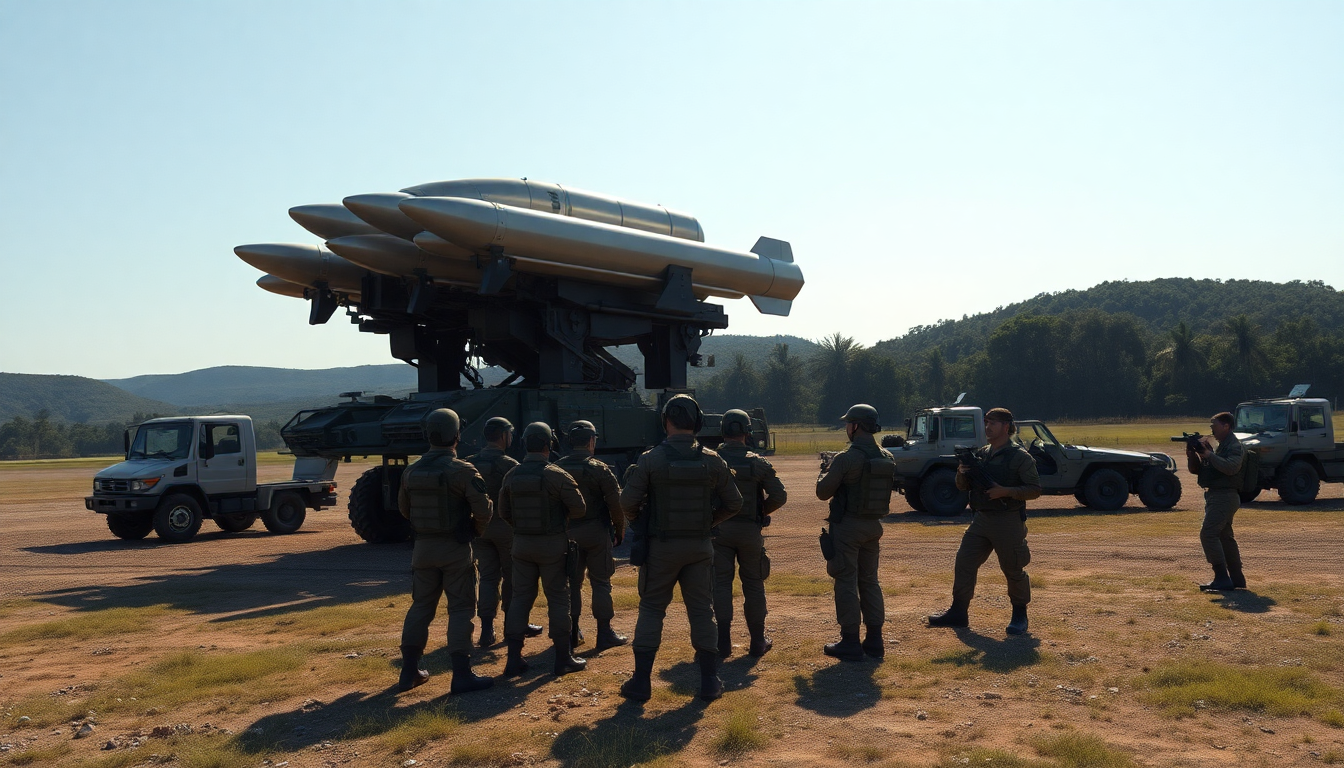Table of Contents
The geopolitical scene in the Indo-Pacific is shifting faster than ever, and the United States has identified China as a major military contender. As tensions continue to mount, the US is sharpening its defense strategies to keep a leg up on the People’s Liberation Army (PLA). One of the most ambitious projects on the table? The Golden Dome missile defense system. If it becomes a reality, this could significantly boost the US’s capacity to protect its interests in the region. But what does this mean amid ongoing budget constraints and strategic challenges? Let’s delve into it.
The Golden Dome: A Shield Against Long-Range Threats
The Golden Dome missile defense system is designed to create a robust shield against long-range missiles, which have become a top concern for US military planners. Analysts warn that if this multibillion-dollar initiative is successful, it could not only enhance the US’s defensive capabilities but also act as a deterrent to Chinese military aggression, especially regarding any potential conflict in the Taiwan Strait. But can it really deliver on its promises?
American defense strategies have traditionally relied on deterrence, using cutting-edge technologies to counteract threats. The Golden Dome system, expected to utilize a network of satellites and space-based sensors, represents a modern take on missile defense. However, experts are debating both the feasibility and the projected costs of this ambitious project. What challenges lie ahead?
This project has roots dating back to the early days of the Trump administration when the idea of an “Iron Dome for America” was floated as a response to rising security concerns. This initiative marks a significant shift in US military doctrine, highlighting the need for strong defense mechanisms in a time of rapid missile technology advancements. But is this shift too ambitious?
Challenges in Implementation and Cost Considerations
Even with its promising potential, many are skeptical about the Golden Dome system’s practicality. The dependency on a complex web of satellites and sophisticated technology raises important questions about its readiness and effectiveness against advanced missile threats. Plus, we can’t ignore the financial implications of such a massive defense project, especially with ongoing budgetary tensions in the US government.
Experts warn that the funding needed for the Golden Dome could siphon off essential resources from other vital military initiatives. As the US navigates its defense budget, it faces a tough challenge: how to justify the costs of the Golden Dome against other pressing military necessities. Will this financial conundrum lead to delays or changes in the project’s timeline?
Moreover, the geopolitical fallout from deploying this defense system could trigger reactions from China, which might see the Golden Dome as a direct challenge to its military ambitions in the Indo-Pacific. This adds another layer of complexity to defense strategies in a region already fraught with intricate power dynamics. How will these relationships evolve?
Looking Ahead: Strategic Implications for the Indo-Pacific
As the US fine-tunes its defense strategies, the Golden Dome missile defense system is poised to play a crucial role in deterring Chinese military expansion. The potential rollout of this system could redefine the security landscape in the Indo-Pacific, not just affecting US-China relations but also influencing the strategic calculations of other regional players. Are we ready for these shifts?
In the years to come, keeping an eye on the developments related to the Golden Dome will be essential for grasping its impact on regional stability. As military technologies advance and geopolitical tensions rise, the US must maneuver through the complexities of defense planning with a focus on flexibility and effectiveness.
In conclusion, while the Golden Dome initiative represents a forward-thinking strategy for missile defense, its success hinges on overcoming significant operational and financial obstacles. The balance between innovation and practicality will ultimately determine the US’s capacity to protect its interests in an increasingly competitive security landscape. Will the Golden Dome rise to the occasion?


